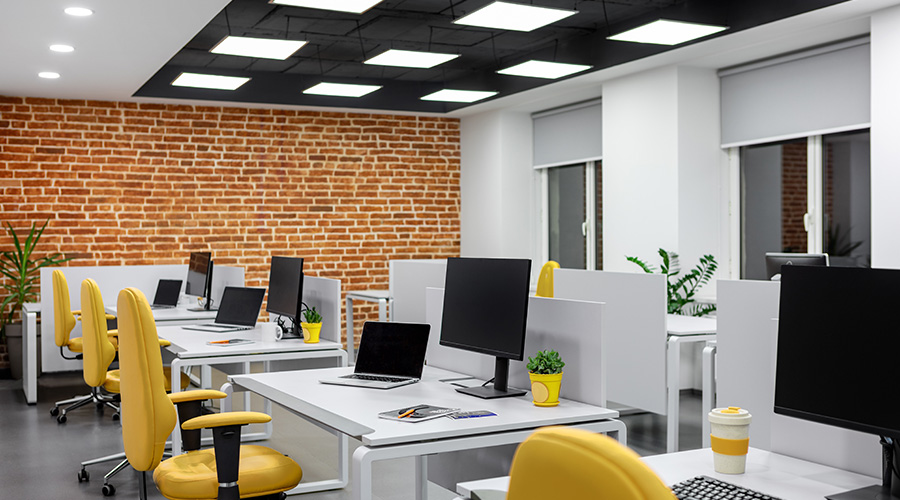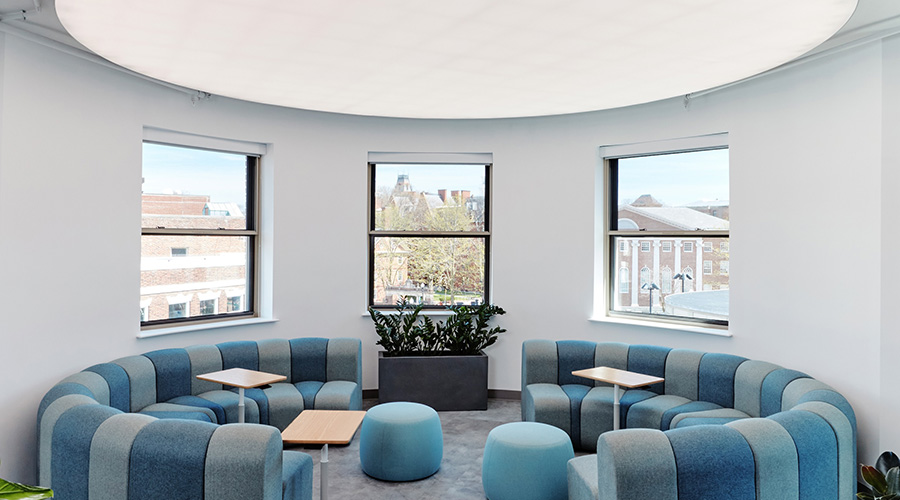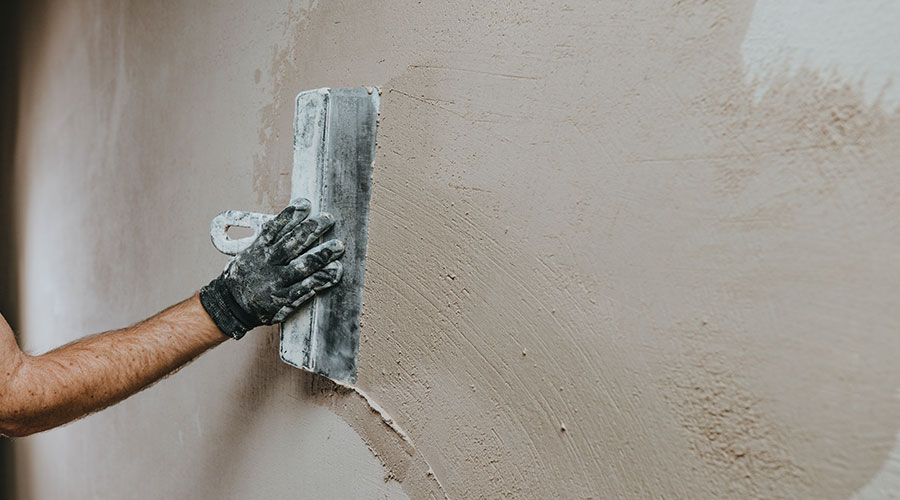How Acoustics Impact Office Productivity
Office noise has a major impact on how happy employees are.
When it comes to office design, sound is often an overlooked element. Lighting, furniture, layout and even thermal comfort top the list of priorities, but acoustics can be an afterthought. This, unfortunately, is much to the detriment of both employee wellbeing and productivity.
The two are in fact closely tied to one another. The happier the employee, the better they are at their job. Research backs this idea with a report from the National Library of Medicine citing studies that show that employees who are in good physical, mental and emotional health perform their jobs at a higher level than those who are not.
“You need to be able to focus and actually do your work in order to feel well,” says Samantha McCormack, managing executive, TPG Architecture.
The sounds around you have a major impact on just that. Studies show that if you’re in an environment that is loud and noisy, your body naturally reacts to it like an outside stressor.
“Being in an environment constantly like that is terrible for your health,” says McCormack. “Acoustics help to create an invisible layer that helps to reduce stress levels in your body you might not even be aware of.”
That invisibility makes acoustics hard to understand, says Lisa Morrison, associate principal, Lawrence Group, but they are key tenant of good design.
“The whole reason we're designing a space—no matter what market it's in—is comfort and getting people to want to come to a space,” says Morrison. “We have to create spaces and create experiences that make people comfortable, make people be able to focus and be the best version of themselves.”
Convincing clients of the importance of acoustics ultimately comes down to proving that return on investment. Morrison achieves this by translating the elimination of distraction through sound comfort into dollars signs.
“The return on that investment is huge compared to the cost of distraction,” says Morrison. “You're never going to eliminate distractions 100%... but if I can help to try to mitigate and reduce the amount, then maybe I can be saving dollars on the back end and helping to have a little healthier, happier workforce.”
McCormark agrees, explain that the success of a design can be measured by whether or not it increases the client’s productivity.
“Does it make their work product better? Does it make their employees lives better?” she asks. “Acoustics are critical to that because noise can be really distracting, and you can't do your best work if you're constantly being distracted.”
Adapting to the Modern Worker
Improving productivity has become a major focus for employers who are struggling to adapt to a changing workforce. Not only is the workforce getting younger, but how people are used to working has significantly changed.
The Covid-19 pandemic was a pivotal turning point for employers and their employees who had to adapt to remote work overnight. Though more people are beginning to return to the office, the expectations and habits around work have completely changed.
Forward-thinking employers are prioritizing the new norms with office renovations that enable flexibility and personalization and prioritize employee comfort.
“It (acoustics) has always been important, but it was something that was very easily cut from budgets before COVID, and now coming back into the office, people see the value in it,” says McCormark.
Amy Wunderlin is a freelance writer based in Fort Atkinson, Wis.
Related Topics:












